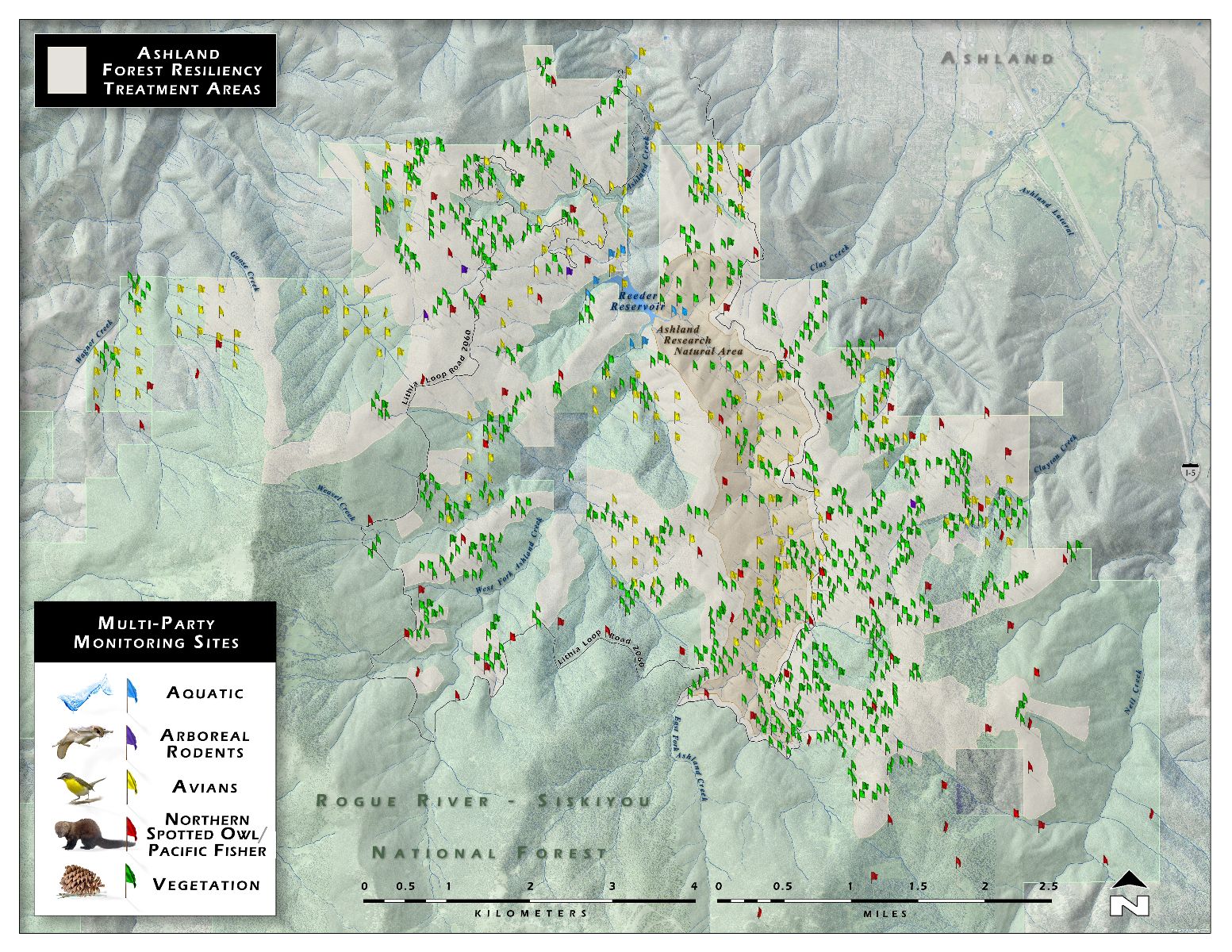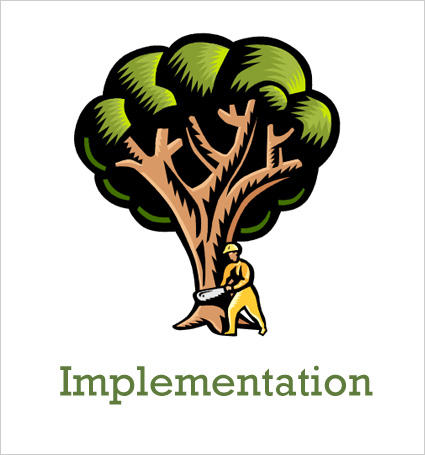Science and Monitoring
The development and implementation of the AFR Multi-Party Monitoring Plan is managed by the AFR Partnership.
Collaborating with local stakeholders, the Forest Service and The Nature Conservancy lead the development of monitoring protocols, and oversee data collection of important key indicators of forest health. Using these quantitative measurements, the AFR partners make necessary adjustments to management actions and restoration work along the way in order to ensure preservation of watershed values. Read the updated Monitoring Plan and look over the Multi-party Monitoring Poster.
Click on Map to Enlarge
Aboreal rodents, Songbirds, Northern Spotted Owls and Pacific Fisher.
Soil Disturbance, Forest Fuels, Exotic Plants and Tree Basal Areas.
Studies on Entomology, Sedimentology, Fire Ecology, and Sociology associated with the AFR Project.
Legacy Tree Retention and Survival.
Water Quality, Sedimentation and Macroinvertebrate Communities.
Public Understanding of Project Objectives and Forest Issues.
This collaborative effort is supported by a committee made up of personnel from the following organizations:

The Monitoring Advisory Committee, coordinated by The Nature Conservancy, was developed to advise project cooperators and interested stakeholders on technical aspects of monitoring. They provide advise and guidance on the AFR monitoring strategy, monitoring plan, project priorities, protocols, data management, public outreach, and fundraising.
For additional information on AFR Project monitoring efforts, please contact the AFR Multi-Party Monitoring Coordinator Dr. Kerry Metlen (kmetlen@tnc.org, 541-770-7933 Ext. 7#).






